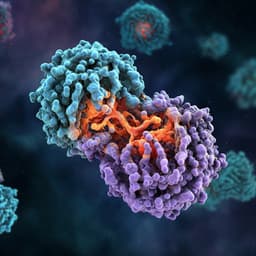
Medicine and Health
Transcriptomics-Guided In Silico Drug Repurposing: Identifying New Candidates with Dual-Stage Antiplasmodial Activity
J. V. B. Borba, B. R. D. Azevedo, et al.
This research, conducted by Joyce V B Borba and colleagues, uncovers promising new antimalarial drug candidates against Plasmodium falciparum by revealing 70 potential drug targets and two standout compounds: HSP-990 and silvestrol aglycone. The latter exhibits impressive efficacy and low cytotoxicity, positioning it as a dual-acting antimalarial contender worthy of further exploration.
~3 min • Beginner • English
Related Publications
Explore these studies to deepen your understanding of the subject.







